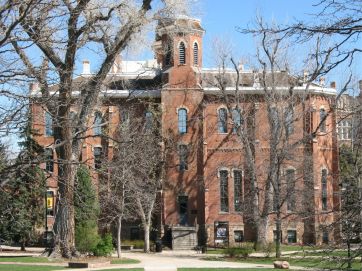CounterCurrent: Week of 11/14
Which came first, the federal student loan system or the high cost of college?
Many people approach the student debt crisis like the classic chicken-and-egg riddle. We can all agree that college is too expensive, but we immediately butt heads when trying to explain why. There are plausible arguments for the chicken (student loans) and for the egg (high tuition), but at the end of the day, we can’t really know which came first. Some even say “neither” and point to other causes entirely.
In reality, as NAS Research Associate Neetu Arnold details in her report Priced Out: What College Costs America, the answer is pretty simple: it’s the chicken. The student loan chicken clearly came before the cost of college egg.
Of course, that chicken was not alone—a whole hen house of government actions, beginning with good-faith initiatives such as the G.I. Bill and President Truman’s “higher education for all” philosophy, aided in flooding American colleges and universities with more students than ever before, while also subsidizing their studies to an unprecedented extent. In response, higher education leaders said “Hey, free money!” and hiked tuition at will. After all, how else are they going to pay for the new lazy river?
Many still believe the egg came first, though, and so they advocate for bigger, fatter chickens to help alleviate student debt. One popular proposal as of late is to increase the Pell Grant, a federal aid program launched in the 1970s that currently sits at a maximum of $6,495 per year. President Biden’s Build Back Better Framework would add $550 to the Pell Grant, but many say this is not enough. Entire organizations have sprung up in an effort to double the Pell Grant. But would any Pell Grant amount—$6,495, $7,045, or even $12,990—actually help students, particularly low-income students, in the long run?
In this week’s featured article, Arnold argues a resolute no. For starters, even a doubled Pell Grant is a mere fraction of the cost of many colleges, particularly elite institutions. Pell Grants therefore run the risk of luring students into colleges they can’t really afford to attend. What’s more, a college degree ain’t what it used to be, both in terms of the education it gets you and the vocational doors it (doesn’t) open. As recent debt-to-earnings research confirms, many bachelor’s degrees aren’t worth the paper they’re printed on. “[A] good college degree does not guarantee financial stability anymore,” Arnold writes. “In fact, an increasing number of non-bachelor degree holders out-earn those with a college education.”
She continues,
Instead of expanding the Pell Grant program, our time and money would be better spent on implementing policies that improve the quality and accessibility of alternatives to traditional four-year degrees. For example, we could encourage more low-income students who have completed high school to enter skill-based fields. Jobs in these areas are not only in demand, but students will see a faster return on investment. This path gives low-income students an actual chance to climb out of their poor financial conditions.
Simply throwing more taxpayer money at the Pell Grant—or any other student aid program, for that matter—will accomplish nothing. This will just incentivize colleges and universities to raise costs even more, saddling even more low-income students with paralyzing debt in the process. Rather, as Arnold suggests, we ought to “break higher education’s stranglehold on good jobs and social mobility,” and in the meantime encourage students of all incomes to explore other alternatives. Do you want higher learning? If so, apply to college and make wise decisions. If not, the debt-free job market is your oyster.
CounterCurrent is the National Association of Scholars’ weekly newsletter, written by Communications & Research Associate David Acevedo. To subscribe, update your email preferences here.
Image: Max Kleinen, Public Domain













